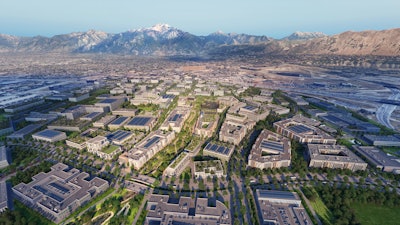When the developers of Hudson Yards needed to pre-sell $1.7 billion worth of luxury condos, they didn’t just order glossy renders. Instead, they invested months into an intensive collaboration with visualization specialists, architects, and sales teams.
This approach might seem excessive until you consider the stakes: in today’s market, visualization can make or break a development’s success.
The Real Cost of the Traditional Approach
Many development projects face costly revision cycles in their visualization phase, often stemming from a disconnect between visualization teams and development goals.
When visualization teams work in isolation, without understanding the project’s sales strategy or target market, the resulting images might look impressive but fail to serve their intended purpose. This disconnect often leads to complete revisions of visualization packages, costing both valuable time and resources in tight development schedules.
Rethinking the Process
The most successful developers are integrating visualization teams earlier in the development process. Consider large-scale mixed-use developments — early collaboration with visualization specialists during the initial design phase has led to insights that influenced final designs, particularly in how public spaces connect with retail areas.
This approach transforms visualization from a marketing tool into a genuine problem-solving asset, helping catch design issues, improve wayfinding, and optimize layouts before breaking ground.
Managing Time Without Sacrificing Quality
With development timelines getting tighter, many developers worry that deeper collaboration will slow things down. However, integrated visualization approaches often lead to smoother marketing preparation phases.
The key lies in parallel processing. While architects refine designs, visualization teams can already be working on base elements and gathering market insights. This concurrent development approach, when properly managed, can significantly compress traditional timelines without compromising quality.
The New Era of Visual Collaboration
The evolution of remote work has transformed how developers and visualization teams collaborate. Distance is no longer a barrier — it has become an opportunity to work more efficiently using modern digital tools, including AI.
Digital Workspaces Transform Decision-Making
Visual collaboration platforms have revolutionized how teams review and refine architectural visualizations. These digital workspaces serve as virtual rooms where developers, architects, and visualization specialists gather to make real-time decisions. Teams can arrange multiple design options side by side, annotate directly on images, and track the evolution of ideas.
This visual history becomes invaluable when explaining design decisions to stakeholders or revisiting earlier concepts. More importantly, these platforms democratize the feedback process. Developers can easily share their thoughts by placing comments directly on specific parts of an image. This precision eliminates the ambiguity that often plagues email feedback chains and reduces revision cycles.
Remote Collaboration Without Compromise
Modern video conferencing has evolved beyond simple meetings. Screen-sharing sessions allow visualization specialists to walk developers through their work in real-time, making adjustments on the fly.
Whether teams use Zoom, Google Meet, or Microsoft Teams, the key is maintaining the human connection that drives successful collaboration. The ability to record these sessions also creates a valuable archive of decisions and discussions. When questions arise later in the project, teams can reference these recordings instead of relying on memory or notes. With the power of AI, meeting notes and next steps become a breeze.
 Rendering by Panoptikon for ‘The Avenue’, Naples, Fla. Client: APREA.Panoptikon
Rendering by Panoptikon for ‘The Avenue’, Naples, Fla. Client: APREA.Panoptikon
Project Management: The Hidden Engine of Success
Behind every successful visualization project lies a robust project management framework that creates a seamless experience for developers while ensuring consistent quality.
Tools That Drive Excellence
Modern project management platforms have become essential for maintaining transparency and accountability. These tools help visualization teams break down complex projects into manageable phases, each with clear deliverables and timelines.
However, the real value lies in how these tools facilitate client communication. Developers gain visibility into project progress without needing to request updates. They can see exactly what stage their visualizations are in, what is coming next, and when they will need to provide feedback.
Beyond Task Management
Modern project management in visualization goes beyond tracking deadlines. The best teams act as consultants, bringing their experience to bear on crucial project decisions. This might mean suggesting different visualization approaches based on target market preferences or advising on how certain design elements might translate to real-world construction.
This consultative approach requires visualization teams to develop extensive project management skills through rigorous training. The goal is to deliver not just quality images, but a premium service experience that makes developers’ lives easier.
AI: The New Team Member
Artificial intelligence (AI) is increasingly playing a role in visualization collaboration. AI tools help bridge language barriers in international projects, assist with initial concept development, and act as agile note-takers so nothing gets lost.
While AI won’t replace human creativity, it’s becoming an invaluable tool for streamlining communication and enhancing productivity. Teams are using AI to generate quick concept sketches, translate technical documents, and even help manage project timelines more effectively.
 Rendering by Panoptikon for ‘The Point’, Salt Lake City, Utah. Client: Arcadis.Panoptikon
Rendering by Panoptikon for ‘The Point’, Salt Lake City, Utah. Client: Arcadis.Panoptikon
A Culture of Client-Centric Service
The most successful visualization teams understand that their role extends beyond creating images. They embrace a service-oriented mindset, measuring their success by the quality of their output and the clarity and efficiency of their communication and collaboration.
This dedication to service quality manifests in everything from how quickly teams respond to client messages to how thoroughly they document their processes. The goal is to create an experience that makes real-estate developers’ lives easier while delivering results that exceed expectations.
From Cost Center to Strategic Asset
The most significant shift in the industry is how leading developers view visualization in their budgets. Rather than treating it as a marketing expense, forward-thinking developers now categorize visualization as a strategic investment that impacts multiple phases of development. This investment pays off through better communication, fewer changes during construction, and faster sales cycles.
Looking Ahead: The Future of Development Visualization
The future of development visualization extends far beyond better rendering technology or prettier pictures and manifests into an ecosystem where technology, project management, and human expertise converge to drive project success.
Remote collaboration tools have eliminated geographical barriers, allowing developers to access top talent in worldwide studios, regardless of location.
Digital workspaces have transformed how teams make decisions, while robust project management frameworks ensure consistent quality and clear communication. These advances make visualization more efficient and they are fundamentally changing what’s possible in real estate development.
As a studio, success lies in our ability to embrace this comprehensive approach. Great projects between real estate developers and architectural visualization studios leverage digital collaboration platforms for real-time feedback, use AI to enhance communication, and rely on rigorous project management to maintain quality.
For development executives, the message is clear: success lies in building partnerships with visualization teams who understand that their role goes beyond creating images. The best teams combine technical excellence with strong project management, modern collaboration tools, and a deep commitment to service. In an increasingly competitive market, this holistic approach is becoming a necessity for project success.
View the original article and our Inspiration here


Leave a Reply